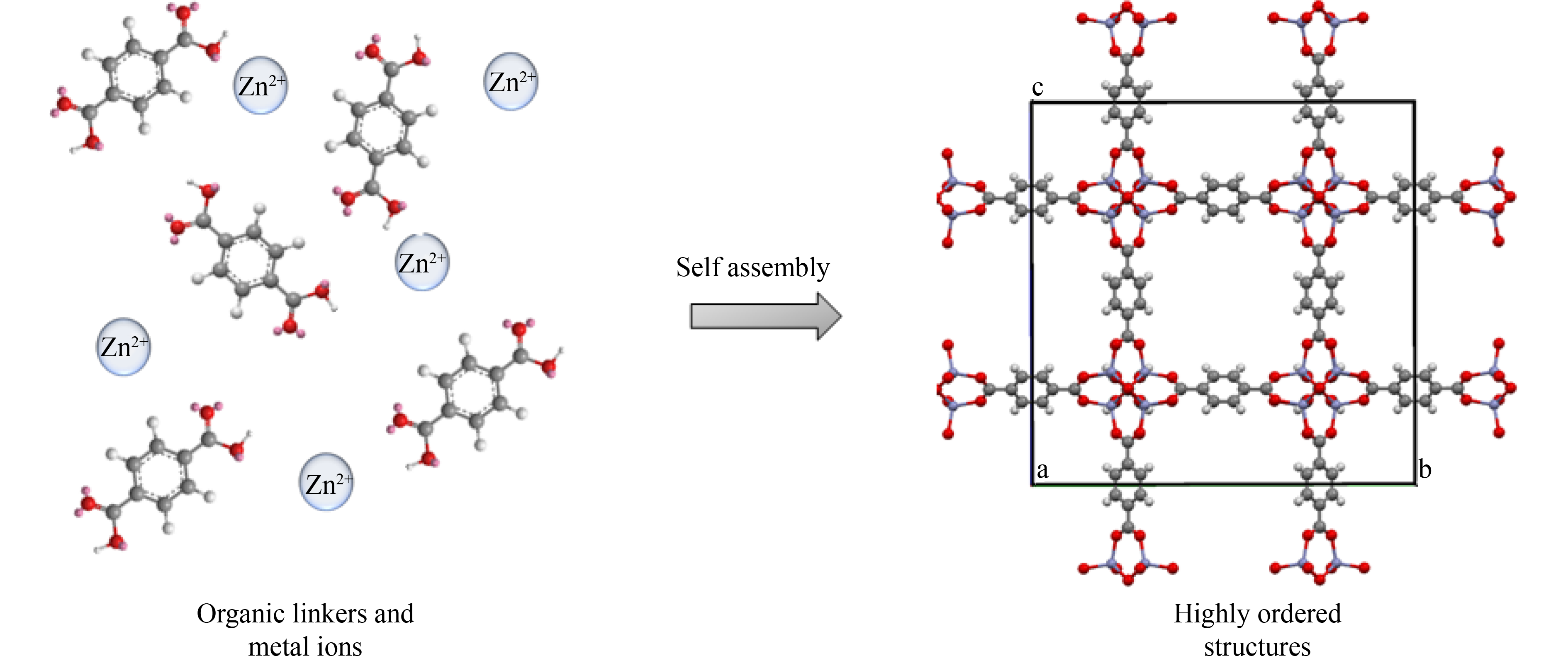The infiltration of guest molecules into MOFs is an effective strategy to modulate important physicochemical properties, such as the bandgap, that improve PHE [
50]. In addition, guest molecules can promote charge transfer between the host and guest, thereby reducing recombination [
51]. Guest molecules can be encapsulated during the synthesis process or through a post-synthesis methodology. Encapsulation through synthesis is performed via a one-pot synthesis method in which guest molecules are encapsulated, while linkers and metals are self-assembled. The one-pot synthesis method has advantages over post-synthesis methodologies [
52]; for example, the guest molecules are more homogeneously distributed inside the MOF and the guest molecules penetrate deeper into the MOFs [
52]. In addition, materials that are infiltrated through the one-pot synthesis methodology usually retain their crystallinity and crystal phase [
53,
54]. Infiltration through post-synthesis methodologies requires pretreatment, during which the residual solvent is removed from the MOFs. In post-synthesis methodologies, the encapsulation of guest molecules can be carried out from a liquid solution or gas/vapor phase. Usually, encapsulation from a gas/vapor phase is advantageous over encapsulation from a liquid phase because there is no competition between the solvent and guest molecules in the former [
55]. Cerium is a lanthanide that usually exhibits activity under visible light irradiation owing to its electronic configuration. Therefore, cerium is useful for improving the light-harvesting ability of MOFs. Other lanthanides and actinides can also enhance the optical properties of MOFs. Platinum is a highly conductive element that is useful for improving the mobility of electrons toward the surface of the material. Another reported strategy to improve light absorption and reduce charge carrier recombination relies on infiltrating the MOF with metal cations such as Ce
4+, an effective photosensitizer, or Pt
4+, a highly conductive metal. Ce
4+ cations were introduced to the crystal structure of UIO-67 (a Zr-based MOF with biphenyl-4,4-dicarboxylic (bpdc) acid as a linker), partially replacing the bpdc linkers with 2,2-bipyridine-5,5-dicarboxylic acid (bpydc). The nitrogen groups in the bpydc linkers have a high capacity to form coordination bonds with Ce
4+ cations; thus, Ce
4+ is easily incorporated into UIO-67 following this methodology. The authors synthesized the UIO-67 material using a solvothermal reaction, whereas encapsulation of Ce
4+ was carried out using a one-pot method. The photocatalytic activity of the modified material is 10 times higher than that of bare UIO-67, which reduces the recombination rate caused by charge transfer from the bpdc linkers to the bpydc-Ce
4+ linkers. After 6 h of light irradiation, the authors observed a decrease in the PHE rate for the bare material and composite, indicating low stability [
26]. PCN-9 (a MOF containing Co and 2,4,6-tris(4-carboxyphenyl)-1,3,5-triazine) was modified by the adsorption of Pt
4+ ions. The cations were incorporated into PCN-9 through coordination bonds with nitrogen atoms in the triazine linkers. The authors synthesized PCN-9 using a solvothermal reaction and encapsulated Pt
4+ ions using a simple method of adsorption from a solution with different concentrations of Pt
4+. The resulting materials demonstrated less charge carrier recombination than bare PCN-9 because the photogenerated electrons in the organic linkers were transferred to Pt, avoiding recombination. High stability was observed in the modified material in X-ray photonelectron spectroscopy (XPS) experiments [
28]. XPS experiments indicated that the Pt
4+ encapsulated in PCN-9 had the same oxidation state after the photocatalytic experiments, suggesting high stability.








